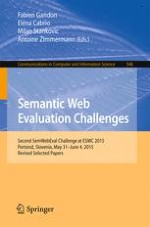This book constitutes the thoroughly refereed post conference proceedings of the second edition of the Semantic Web Evaluation Challenge, SemWebEval 2015, co-located with the 12th European Semantic Web conference, held in Portorož, Slovenia, in May/June 2015.
This book includes the descriptions of all methods and tools that competed at SemWebEval 2015, together with a detailed description of the tasks, evaluation procedures and datasets. The contributions are grouped in the areas: open knowledge extraction challenge (OKE 2015); semantic publishing challenge (SemPub 2015); schema-agnostic queries over large-schema databases challenge (SAQ 2015); concept-level sentiment analysis challenge (CLSA 2015).
